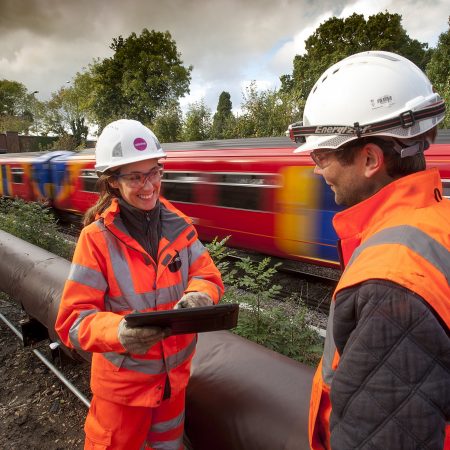How Can Enabling Technology on Infrastructure Projects Make the Experience Easier?
Has there ever been a more exciting time to be involved with transport infrastructure? A quiet revolution is bringing profound changes to how projects are planned, designed and delivered – all enabled by data and smart technologies.
Already, we are seeing greater collaboration, efficiency and accuracy fuelled by digital surveying and BIM. Teams working on different shifts and for different contractors can access, update and share project information in real time. They can collaborate with designers and customers in remote locations with less need for time-consuming site visits and project meetings.
Meetings can focus on decisions and innovation rather than information sharing. And the project legacy includes detailed asset data that is essential for future maintenance teams.
A Gateway to MMC
Reliable project data allows alternative methods and technologies to be deployed with lower risk. Offsite manufacturing and 3D printing, for example, become more feasible where there is an accurate 3D model of the asset and topography.
Confidence that offsite-made elements can be installed without any complications, because they are configured based on accurate site and asset data, has opened the way for these techniques to be used more widely. A similar argument will apply to robotics.
Meeting Real Needs
Technology has the capacity to make planning more accurate so that our transport infrastructure does a better job of meeting the needs of the population and the economy. Anonymised tracking of mobile phone data offers a far more accurate and complete picture of how people move around busy urban areas and transport hubs that you could ever get from passenger surveys.
Detailed demand modelling will prevent costly ‘white elephants’ that never experience the predicted passenger volumes from being developed. It can also help to plan upgrade and maintenance projects that are far less disruptive or inconvenient.
Contracting and Compliance
Even areas such as procurement, supply chain management, contract compliance and finance can be streamlined and made more transparent in future through Blockchain and similar distributed ledger technologies.
Osborne is actively engaged in applying technology to improve how our projects are designed, delivered and managed. This includes developing the BIM capabilities of our workforce and supply chain, as well as implementing innovations of our own such as the IO app that allows improvement suggestions from all of our extended team members to be captured instantly from any device.
As an organisation, we are excited about the future and what technological advances will mean for our workforce, customers and all of the stakeholders who rely on the work we do. There’s never been a better time to be part of this exciting industry.

